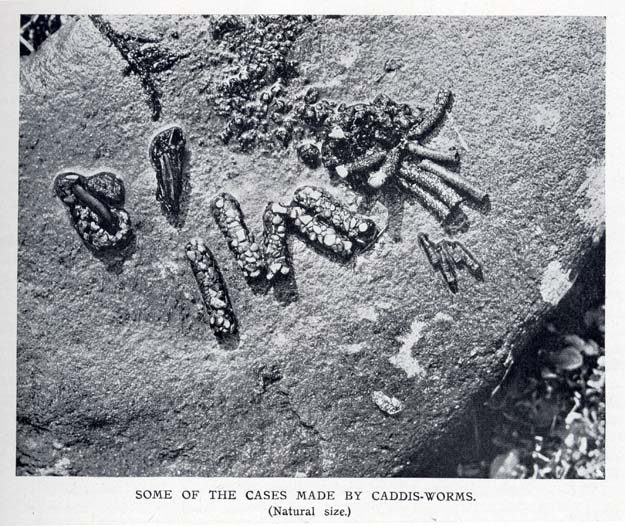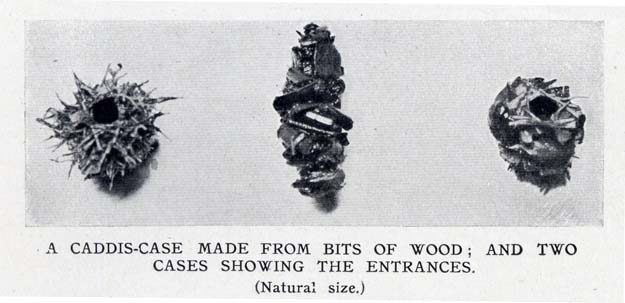R. A. Staig, « Stone-Turning- II », Londres, The Nature Book, Cassell and Company, 1909, pp. 571-572.
It uses various materials for this purpose : sand, tiny pebbles, chips of wood, nibblings of leaves, bits of grass, and even minute snail, shells, with their owners inside, whether they like it or not. The skill shown in the construction of some of these Caddis dwellins is remarkable. Whatever shape or appearance the structure may have outside it is invariably tubular inside and confortably lined with silk ; and, though usually just wide enough to admit the creature’s body, many are made sufficiently roomy so that our Caterpillar-like friend, when he gets tired of looking out at one end of his tube, may turn about and have a look out at the other.

The photograph on page 571 of a group of Caddis-cases found fastened at their ends to the under-side of a stone in a rapid running stream shows very clearly a few of the varied formations of these objects. The four smallest have been made from bits of rushes cut in exact but gradually diminishing sizes, and glued together in fours so as to produce a rectangular and tapering effect. A crude construction in the isolated example above the set of five, which have been built with minute stones of approximative size. More elegant are the horn-shaped forms composed of particles of sand and grit, so equal in size and so neatly cemented together that it is difficult to believe these to be the workmanship of mere grubs. Many Caddis-worms do not moor their cases to stones but carry these temporary habitations about with them ; and we frequently notice a very regularly built case with a small stone or a seemingly superfluous length of stick attached to one end. The small stone counteracts the buoyancy of a light case, and the long stick lessens the difficulties of a fat Caddis walking under water with a heavy one.
